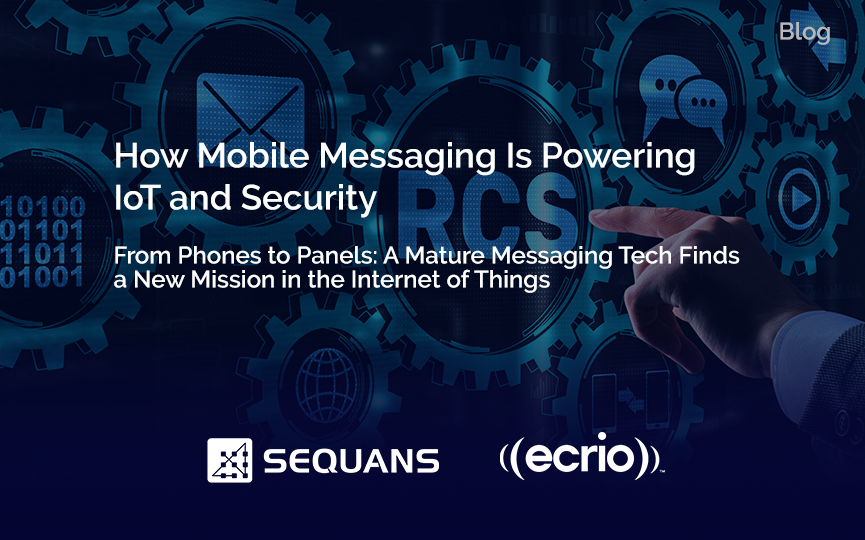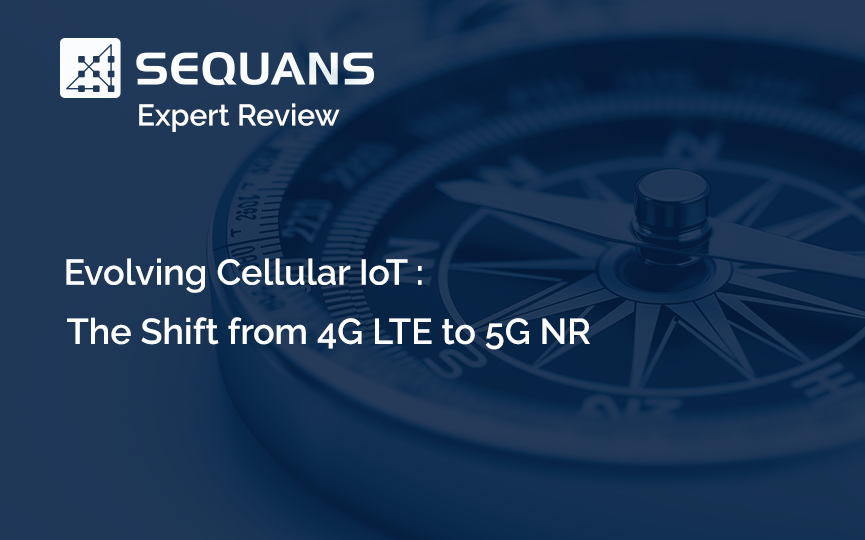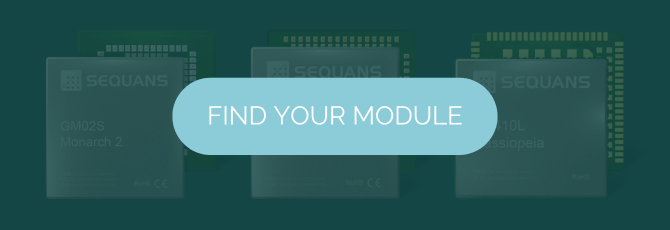The Future of Resilience Contest with Microchip
Sequans and Microchip have been working together to simplify and lower the cost of IoT device design. To support this objective, Microchip has introduced the AVR-IoT Cellular Mini development board, which gives developers an easy blueprint for building 5G IoT devices. It is based on Microchip’s 8-bit AVR128DB48 microcontroller and includes the easy-to-use cellular connectivity of Sequans Monarch 2 LTE-M/NB-IoT module. No one is better at supporting developers than Microchip and this can be seen in the wide array of tools Microchip has provided for this development board. These include security tools, provisioning tools, a sandbox portal, global SIM card, and an expansive Microchip Github Library.
The Future of Resilience Contest
With these comprehensive development tools in place, Microchip, in collaboration with the Hackster developer community, launched a contest to discover what ingenious solutions developers would come up with to support the creation of sustainable and resilient communities using real-time IoT. The response was overwhelming and the ensuing smart city solutions proposed were truly inspiring! Contest participants were asked to address three main aspects of resilient cities: predictive maintenance, interspecies interactions, and waste management. Leave it to Microchip to channel the limitless creative potential of the developer community and get them focused on this very important initiative.
We at Sequans were very excited to be part of this grand effort when we were asked to join the panel of judges. As a 4G/5G cellular IoT solutions provider focused entirely on building feature-rich, low-power chip and module solutions, we were very pleased to see our technology used in the effort to create earth-saving applications that will benefit our cities, our environment, and our world. We began focusing 100 percent on power optimized IoT solutions many years ago for exactly this reason.
The Power of Cellular Connectivity
While reviewing the contest entries, what struck us most is one recurring reality—and that is the importance of cellular connectivity in the development of scalable, reliable, and ubiquitous IoT applications. Cellular is available everywhere and it provides an out-of-the-box experience for developers like no other. We were delighted to see that the AVR-IoT Cellular Mini, via the Microchip code base, enabled Monarch 2 to connect to virtually anything on the Internet.
At the heart of many entries was the seamless integration of edge and cloud computing, coupled with the smart utilization of machine learning algorithms trained on various smart city uncertainties. Whether it’s optimizing road maintenance through car counting, detecting faults in industrial equipment, or intelligently managing public utility services, the solutions exemplified the transformative power of IoT in shaping sustainable cities.
And The Winners Are:
Sashrika Das: First Place
Waste Management: Smart Trash Buddy
The Smart Trash Buddy uses sensors and algorithms to optimize trash routes, making sure fullest cans are taken first, detect if cans have fallen over, and detect dropped litter. The data is sent to authorities via SMS.
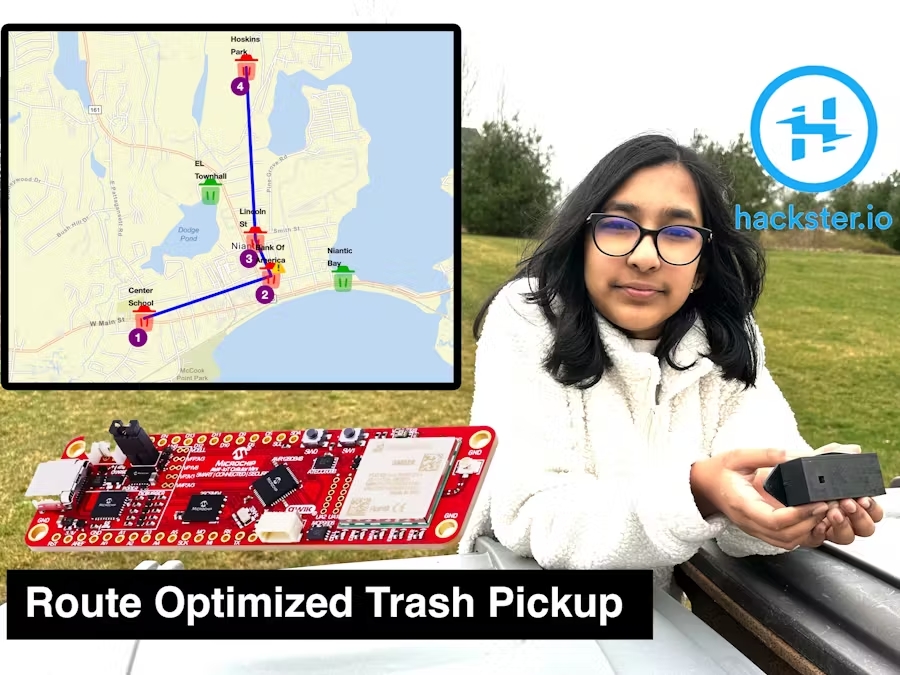
Bob Hammell: First Place
Predictive Maintenance: IoT Vehicle Counter for Predictive Road Maintenance
This app monitors road usage, detecting and logging vehicle traffic in real time using a camera. The purpose is to improve road maintenance by counting cars, since the need for pothole repair and crack sealing are directly proportional to the amount of traffic. The IoT-connected cameras send data to the cloud database where traffic engineers can proactively schedule maintenance, thereby keeping city roadways prepared and resilient.
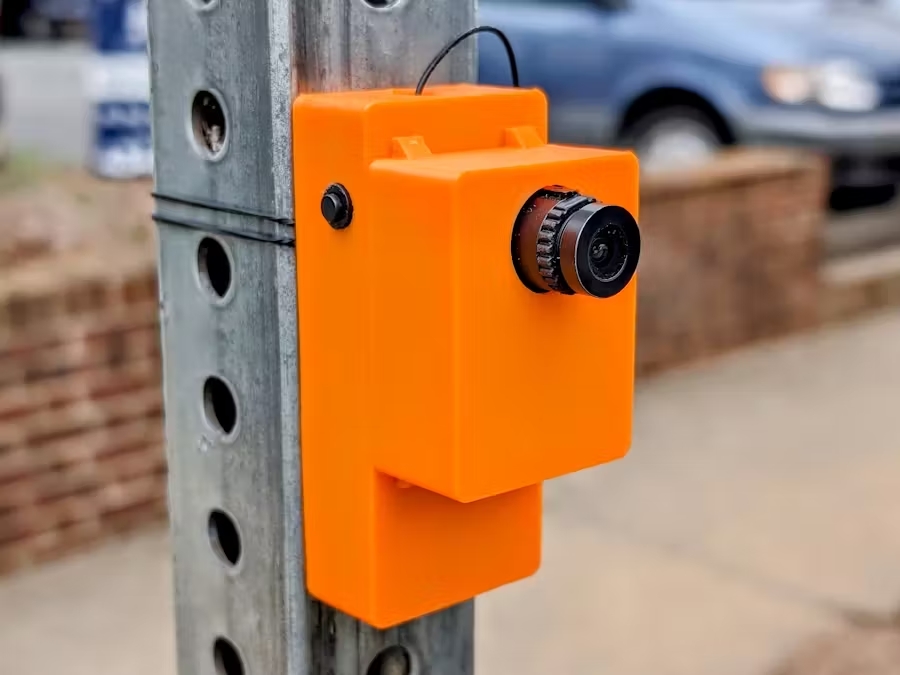
Daniel Németh: First Place
Interspecies Interactions: Crowdedness Monitor
Using smart sensors, this app listens to wireless signals and noise levels to determine how crowded a public place is. The information enables potential visitors to plan visits when crowd levels are lowest, or enables city employees to schedule maintenance activities when it would cause the least amount of disruption.
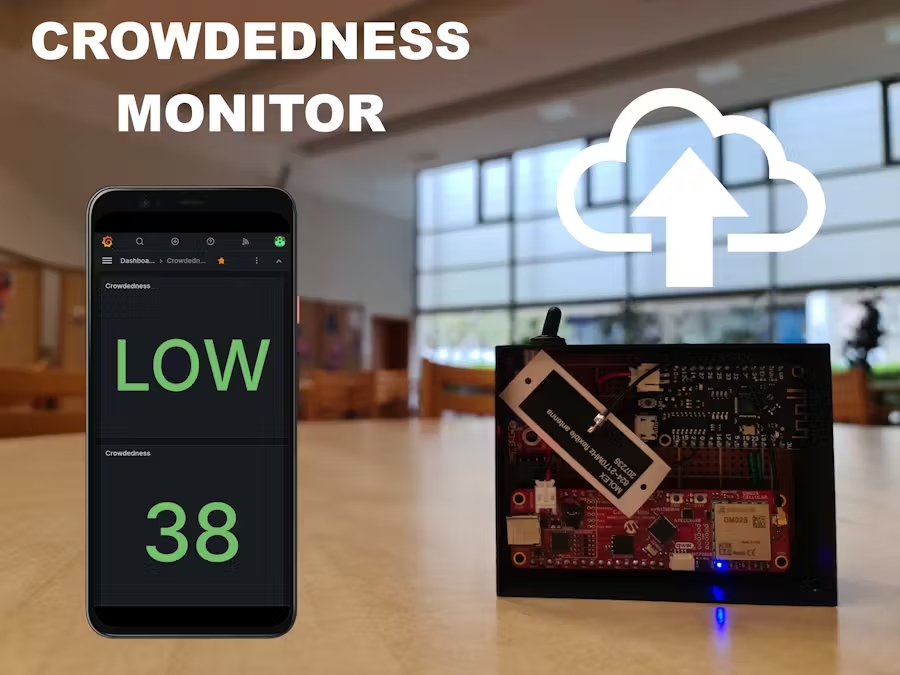
See the entire list of winners here.
See Hackster’s Microchip AVR-IoT Cellular Mini overview video here.
Learn more about Microchip AVR IoT Cellular Mini Development Board here.
The Microchip+Hackster contest was a great learning experience. We saw the valuable synergy created when 4G/5G connectivity combines with smart machine learning at the edge. We saw that the transformative power of cellular can move the internet of things towards the intelligence of things, demonstrating that 4G/5G connectivity as a service can be instrumental in shaping a brighter future for generations to come.

